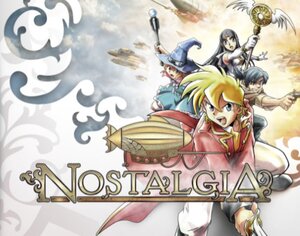
With the rapidly-approaching October 27th release of Tecmo's Nostalgia title, we thought it might be time to get in touch with the game's developers for a little interview to find out more information about the game. We were fortunate enough to catch up with Keisuke Kikuchi of Tecmo, and Naoki Morita of Red Entertainment, who were kind enough to take time out of their busy schedules to answer a few of our questions.
You can check out the exclusive Nintendo Life interview below to find out what they had to tell us about their upcoming DS Japanese RPG.
Subscribe to Nintendo Life on YouTube841k

Nintendo Life: How long has Nostalgia been in development?
Keisuke Kikuchi: It took ten years for plotting, half a year for the development of a prototype, and one additional year for product development. Mr. Morita (Producer of Red Entertainment) had cherished the concept for Nostalgia for ten years, then Tecmo produced it, Red Entertainment planned it, and Matrix developed it. Finally, we have shaped it as a Nintendo DS title together.
Nintendo Life: Why was the Nintendo DS chosen as the platform of choice for Nostalgia?
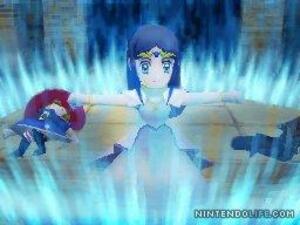
Kikuchi: We chose Nintendo DS because we thought of it as the best hardware for a broad demographic, like adult people who start enjoying games again after a long interval, or the young people coming into adolescence who are at the same age as the hero character of Nostalgia.
Naoki Morita: I think the best feature of Nintendo DS is that you can enjoy it casually at anytime and anywhere like reading a book. RPG games have an aspect of enjoying the long story, so I believe DS is the best platform since you can start and take a break at anytime. Also, I think DS is the most suitable for the novel-style adventure elements of Nostalgia.
Nintendo Life: What about Nostalgia makes it stand out from other Japanese-style RPGs?
Morita: The environment setting of travelling the actual world of 19th century, not an imaginary world, makes Nostalgia different from other RPGs. It makes it easier to empathize with the heroes.
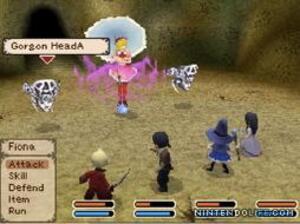
Recent Japanese RPG games’ settings and world-views are so complicated, and their stories tend to put the priority on the characteristic aspect of the hero and progress without the player’s will. We paid careful attention to design the hero as an “alter ego” of the player.
Also, you can explore the world through various routes by changing the layers you fly across when you travel in airships. I think this is an advantage of Nostalgia as well.
Kikuchi: In addition, there are two kinds of battle systems, “airship battles” in the skies and “party battles” in the dungeons.
In airship battles, you can customize your ship by purchasing weapons and shields at various local area shops, and each of the four characters manipulate specific weapons on the ship, such as its ramming blade, cannons, and guns. Plus, each character has unique magical skills that can only be used on the airship. The unique strategic complexity of these battles help to compliment the normal party battles in dungeons.
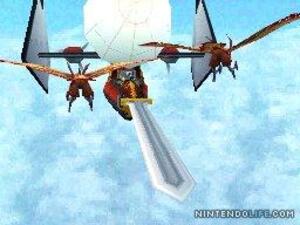
Nintendo Life: The ability to battle while in the airship seems to be a particular aspect of the game being promoted with the recent trailers. Does this play a big role in the game itself?
Kikuchi: The airship is the most important element in this game—you traverse Earth from the ship, soaring above the ground. The encounters you face on the airship are tough and tactical, so you must upgrade your ship in order to succeed. You amass new airship weapons at each new destination, customizing your craft to meet your specifications, and you can then go to further regions or higher altitudes. Be careful, however, as much tougher battles will happen if you fly too far up. Overall, the airship provides the heart of the adventure, showcasing many elements like “customization” or “collection” which I used to love in my childhood.
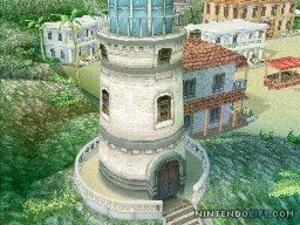
Nintendo Life: What about the land battles? Can you tell us a bit more about the combat system in the game and what makes it unique?
Kikuchi: Each character attacks the enemies with some weapon such as a sword, gun, or with magic and uses their own “skills” (specific abilities).
Players can get the skill points after they battle with monsters. You can determine which character will take the point and what kind of skills they can get. Like this, you can enjoy customizing the character.
For the players who want to focus on the battle, I recommend using the ordering system for enhancing the strategic aspect of the battle. The order of attacking is put as an ”order” list on the bottom of the DS screen, depending on the quickness of each character, including the enemies. In each command or skill, the waiting time for the next attack is set and you can also use a skill to make the enemies slower or your friends faster. It’s a lot of fun to find the best way for finishing the combat efficiently by combining those skills and understanding the characteristics and behaviour patterns.
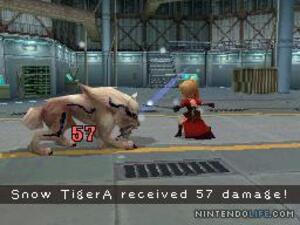
Nintendo Life: Does the game feature touchscreen controls or make use of the more standard controls of the d-pad and action buttons?
Kikuchi: It’s compatible with the standard control of the D-pad and action buttons since it’s more general for the RPG fans.
Nintendo Life: Was there any particular aspect of development that proved to be more challenging than others?
Kikuchi: It was challenging to balance the two different battle systems. We paid close attention to make the player stay absorbed in the story, party battles, airship battles, and treasure hunting and quest.
Morita: It was most challenging to depict the world with 3D and three layers in technical point and volume. Actually, it’s the same workload as developing the three fields of RPG games.

Also, we checked the airship, scale reduction of map, camera angle, and flying speed repeatedly so that players can feel good when flying in the skies and adjusted it up until the last minute.
Nintendo Life: Musical scores tend to play a key role when it comes to the RPG genre. Can you tell us a little bit about the soundtrack in Nostalgia?
Morita: Not only in the RPG genre, I think the sound is one of the most important parts in any game. I believe the best condition of a game can be experienced when the information by both visual perception of graphic and auditory perception of sound matches up.
We tried to have players know what country or region they are in only by listening to the music. For that purpose, we created the art board for all cities and dungeons first, and then created the music and graphics to them.
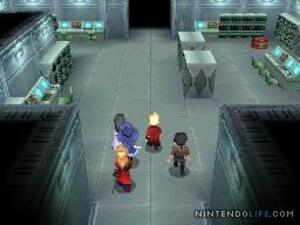
Also, the unforgettable melody line of the main theme is my favorite.
Nintendo Life: Is there anything you'd like to tell our readers about Nostalgia in closing?
Kikuchi: Nostalgia is a great game which can be presented by parents to children or among lovers or friends with confidence. It is filled with a lot of fun like adventurous spirits which you tend to forget in your busy life or creativity of customizing the airship and characters by yourself. I would be happy if you would choose this game and experience the fun of flying to another world of 19th century on airships.
Morita: Nostalgia is a game which was developed in pursuit of the original fun of RPG games. It is filled with various adventures, mysteries, and attractive characters. You can enjoy advanced elements such as enhancing your skills or collecting items or playing the sub-stories, so I’m sure this game can be loved by heavy gamers.
The world of Nostalgia is what will make adult people feel nostalgic for their childhood, and children will find it new conversely. So, I would be very happy if parents and children can enjoy this game together and talk about the adventures.
We would like to thank Morita-san and Kikuchi-san for taking the time to take part in this interview with us. We very much appreciate it.




Comments 13
This game keeps looking better and better the more I see of it...I cannot wait to get my hands on it. Luckily it's not much longer now.
Great interview, Corbie. Looking forward to this, just hope the air exploration isn't as bleh as it looks in the trailers.
This game is looking awesome. It seems really under-hyped. This is definitely DS GOTY potential. The only other game that seems to come close is M&L BIS
Well at least it's dated finally - now I know when to start ignor-no, no, I said I wouldn't hate on it anymore, and I won't.
I don't like Anime styled games myself, but this looks very polished and well done! I know alot of you guys will eat this up!
I know alot of you guys will eat this up!
I'm one of them.
I wonder why it's called "Nostalgia"
Wow, that was an awesome interview Corbie! I can't believe that you managed to get an interview with these guys. Great work. I am officially psyched for this game now and I can't wait to play it!
Great interview. Looking forward to this game more than ever.
Fantastic interview, Corbie! Looking forward to this.
Very insightful review. I'm picking this up for sure....and now I can't wait.
Great interview. I too am looking more and more forward to this game the more i read up on it. It interested me when i first heard about it, but now i'm really anticipating it!
10 years to plan! This is certainly one of the DS games I'm looking forward to the most!
Show Comments
Leave A Comment
Hold on there, you need to login to post a comment...